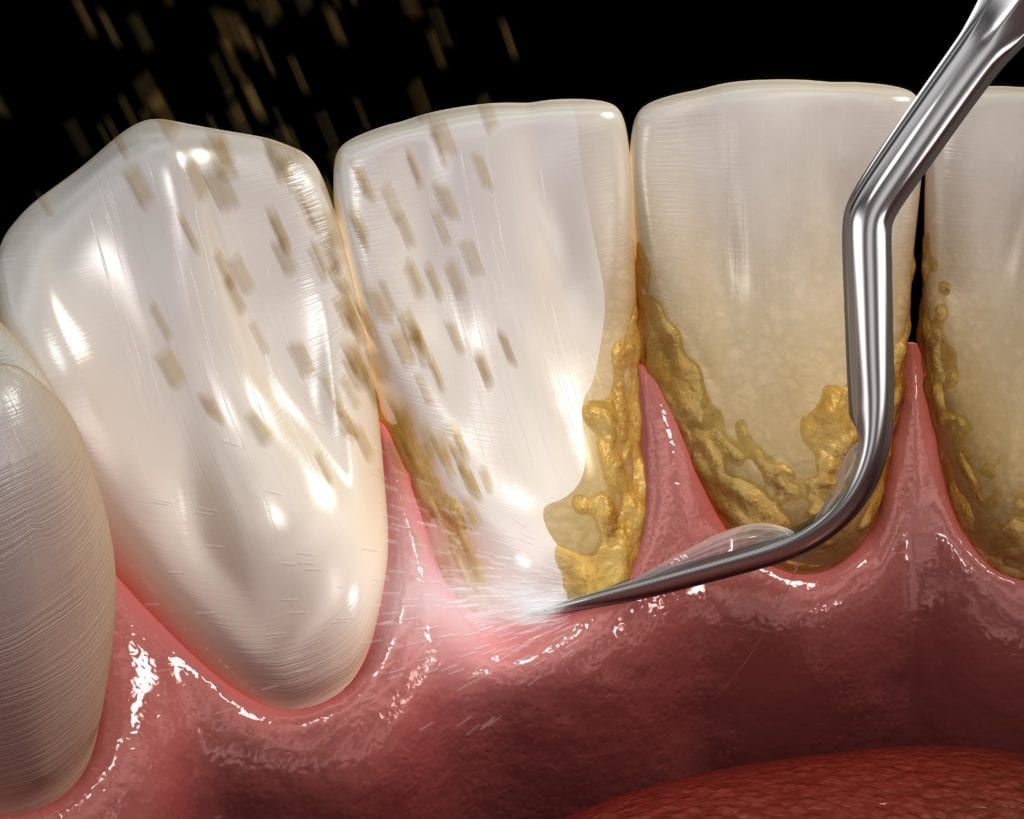Although cosmetic dentistry offers various methods to replace missing teeth, the best solution is always to keep your natural teeth. Maintaining your smile with proper dental hygiene and regular dental visits helps to minimize the risk of developing dental conditions that can lead to tooth loss. The two main causes of tooth loss are tooth decay and gum disease, which are both caused by excess bacteria in the mouth.
Bacteria are naturally-occurring in the mouth, however problems can arise when excess bacteria collect in plaque and tartar. In order to regulate bacteria levels, your dentist performs dental cleanings that remove plaque and tartar from the surface of your teeth. For most people, the American Dental Association recommends having a dental exam and cleaning once every six months, although some individuals may require more frequent care. During your dental exam, your dentist will examine your teeth and gums to determine what type of teeth cleaning is best suited for your dental health needs. Here are the four types of dental cleanings you may be offered:

Prophylaxis:
The term prophylaxis is defined as “an action used to prevent disease”, therefore prophylaxis teeth cleanings are just dental cleanings used to prevent tooth decay and gum disease. Since bacteria populations have been found to thrive and grow in plaque and tartar, prophylaxis cleanings prevent the risk of disease by removing plaque and tartar from the surface of the teeth. During a prophylaxis cleaning, the front and back of the teeth will be cleaned, as well as the areas in between teeth. This ensures the removal of plaque and tartar from every surface of the teeth that may have been missed during usual brushing and flossing.


Scaling and Root Planing:
The term scaling refers to the removal of plaque and tartar from the surface of teeth, as well as from the gum pockets. Root planing refers to a process that smooths out the tooth root. When performed together, scaling and root planing function as a deep cleaning to treat gum disease. Removing plaque reduces inflammation, while smoothing the roots helps receded gums to reattach to the teeth. Severe cases of gum disease may require multiple appointments and local anesthetics to complete a scaling and root planing cleaning, however more mild cases can generally be completed comfortably in a single dental appointment.

Periodontal Maintenance:
If scaling and root planing cleanings do not eliminate gum disease, then it has likely progressed from gingivitis to periodontitis. Periodontitis is an advanced form of gum disease that cannot be cured and can eventually lead to tooth loss if not properly treated. For cases of periodontitis, periodontal maintenance cleanings are frequently needed to eliminate excess plaque, reduce gum inflammation, and halt the progression of the disease. The frequency of periodontal maintenance cleanings will vary depending on each individual case.

Debridement:
The term debridement refers to the removal of foreign material. In the case of a dental debridement, this is referring to the removal of excessive amounts of plaque and tartar that have become embedded in the gums and the spaces between teeth. Cases requiring dental debridement are usually from patients who have not practiced good oral hygiene or have skipped multiple teeth cleaning appointments. A debridement cleaning requires the use of a special electric tool to break up and remove tartar. Once enough has been removed, a prophylaxis cleaning will be performed to remove any remaining plaque.
Ultimately, regular teeth cleanings can help preserve your natural teeth no matter what type of cleaning they are. With that being said, having your dentist determine the right type of cleaning for your dental needs is important to maintain your oral health. Preserving your smile means taking care of your smile and knowing which type of teeth cleaning to use is part of having a lasting smile.

